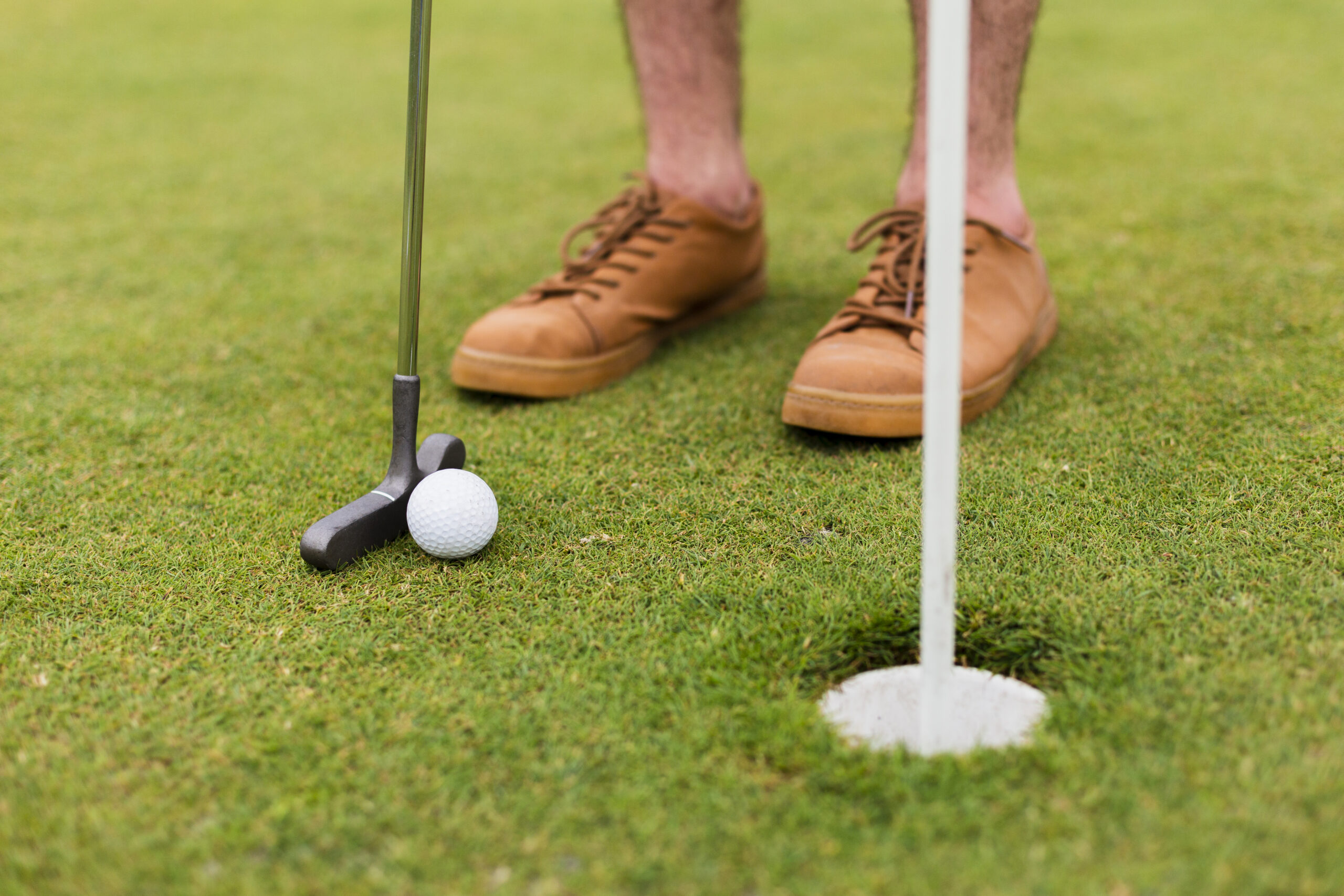There are four main types: woods, irons, wedges, and putters. Some golfers also use hybrid clubs, which blend the characteristics of woods and irons.
The driver is primarily used for long-distance shots off the tee, while fairway woods are used for long shots from the fairway or rough. Drivers typically have larger heads and longer shafts than fairway woods.
Golf balls vary by construction (two-piece, three-piece, multi-layer), compression, and spin. Beginners may prefer a two-piece ball for distance and durability, while advanced players often use multi-layer balls for better control and feel around the greens.
Look for shoes with good grip (spiked or spikeless), comfort, and waterproofing. Well-fitted shoes with support are essential for stability and reducing fatigue during your round.
Wearing a golf glove is optional, but most golfers wear one to improve grip and reduce blisters on their non-dominant hand. Gloves help maintain better control of the club, especially in humid or wet conditions.
If you accidentally hit the ball twice during a single stroke, the shot counts as one stroke, but no additional penalty is incurred according to the new rules introduced in 2019.
If your ball hits another ball on the green, you must replace the other player’s ball to its original position, and you continue from where your ball lies. There is no penalty unless playing match play, where the specifics may vary.
If you play from the wrong teeing area in match play, you lose the hole. In stroke play, there is a two-stroke penalty, and you must replay the shot from the correct tee.
If the tree or bush is not marked as a penalty area or ground under repair, you must play the ball as it lies. However, if it interferes with your stance or swing, you can take an unplayable lie with a one-stroke penalty.
You can either play the ball as it lies or take a one-stroke penalty and drop the ball within two club lengths of where it crossed the hazard boundary or go back as far as you want along the line it crossed.
In a scramble, each team member hits a shot, and the team chooses the best shot, from which all players hit their next shot. This continues until the ball is holed. It’s a popular format for charity and corporate tournaments.
Stableford awards points based on your score on each hole relative to par:
The player with the most points wins.
A handicap allows golfers of different skill levels to compete fairly by adjusting their score. In stroke play, your handicap is subtracted from your total strokes, giving your net score. Lower handicap players typically perform better on difficult courses.
The cut is a score threshold that determines which players continue after a certain number of rounds (usually two in a four-round tournament). Players who do not meet the cut score are eliminated from the competition.
Most professional tournaments, like the PGA Tour, last four days, typically from Thursday to Sunday, with players completing one 18-hole round per day.
While another player is taking a shot, you should remain quiet and still, avoid distractions, and stand out of their line of sight. Only offer advice if asked.
Always repair your divots by replacing the displaced grass or filling the hole with sand. On the green, fix any ball marks by gently using a repair tool to lift the grass and smooth it out with your putter.
The player with the lowest score on the previous hole, or the winner of the hole in match play, has the honor of teeing off first on the next hole.
If you’re holding up the group behind you, it’s courteous to allow them to play through. Keep an eye on your pace of play, avoid excessive practice swings, and be ready to hit when it’s your turn.
Always rake the bunker after playing your shot to erase footprints and divots. Enter and exit the bunker from the lowest point to avoid damaging the edges.
The slope rating of a course is typically displayed on the scorecard or provided by the course’s website. It indicates the difficulty of the course for a bogey golfer relative to a scratch golfer.
A par-3 course is a short course where every hole is a par 3. It’s ideal for practicing your short game or for beginners who want to play a full round without the distance of a standard course.
Most courses offer golf cart rentals. Simply ask at the pro shop or during your tee time booking. Rental fees vary based on the course and whether the cart is shared.
Driving ranges are used for practicing long-distance shots, like drivers and irons. Many driving ranges have designated areas to practice chipping and putting as well.
Twilight rates are discounted rates for playing later in the day, often in the late afternoon. These rates are offered because there’s less daylight, so you may not finish a full round.
An ace is another term for a hole-in-one, which is when a golfer gets the ball into the hole with a single shot, typically on a par-3 hole.
A double bogey is a score of two strokes over par on a given hole.
Par is the expected number of strokes that a skilled golfer should take to complete a hole or a round. Each hole is designated as a par 3, par 4, or par 5.
A birdie is a score of one stroke under par on a hole.
A handicap index is a measure of a golfer’s potential ability on a course of standard playing difficulty. It is used to calculate a course handicap to level the playing field in competitions.
Focus on proper alignment and ball position. Ensure your clubface is square at impact, and maintain a smooth, controlled swing. Practice hitting your target, not just hitting the ball.
To escape a bunker, use a sand wedge and position the ball forward in your stance. Open the clubface slightly and aim to hit the sand a couple of inches behind the ball, allowing the sand to carry the ball out.
Improve putting by practicing green reading and developing a consistent stroke. Focus on distance control and keeping your eyes over the ball. Short putting drills are also key.
In windy conditions, club up (use a longer club) when hitting into the wind, and club down (use a shorter club) with the wind behind you. Play lower, controlled shots to minimize wind impact.
To manage pressure, focus on your pre-shot routine, take deep breaths, and stay present. Stick to your game plan and avoid taking unnecessary risks, even when stakes are high.



The Golfer’s Guide © 2024